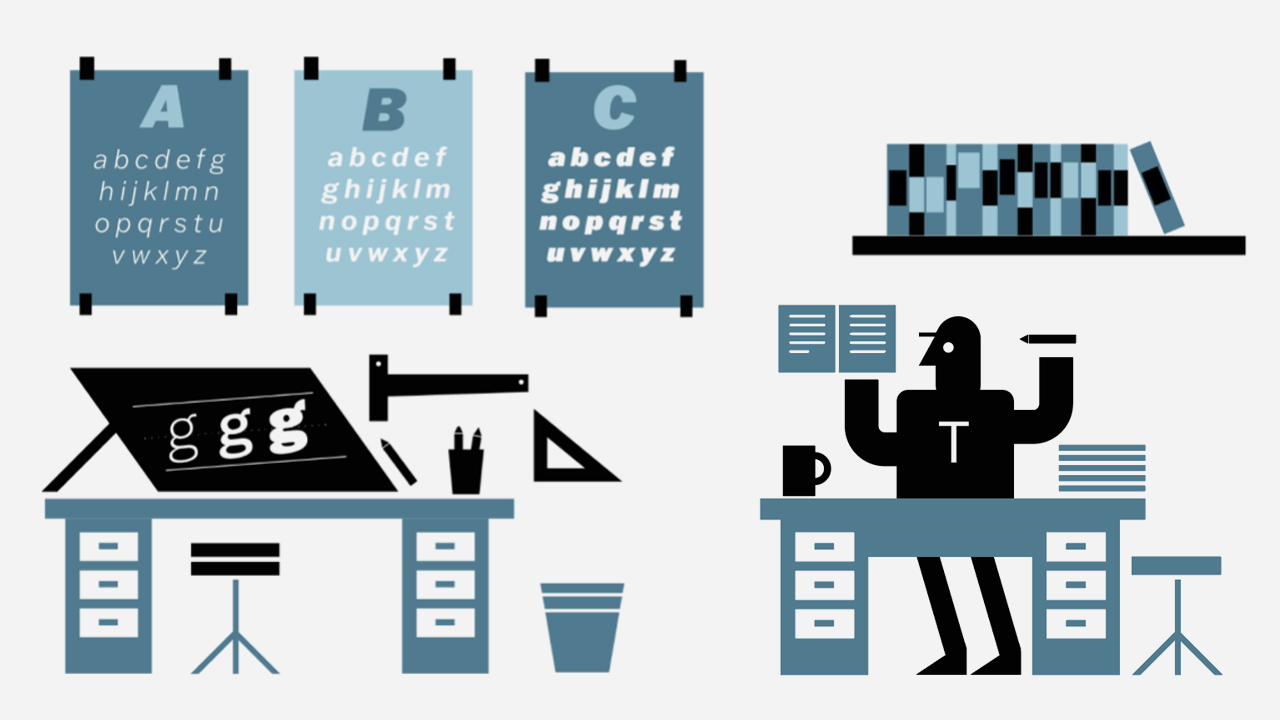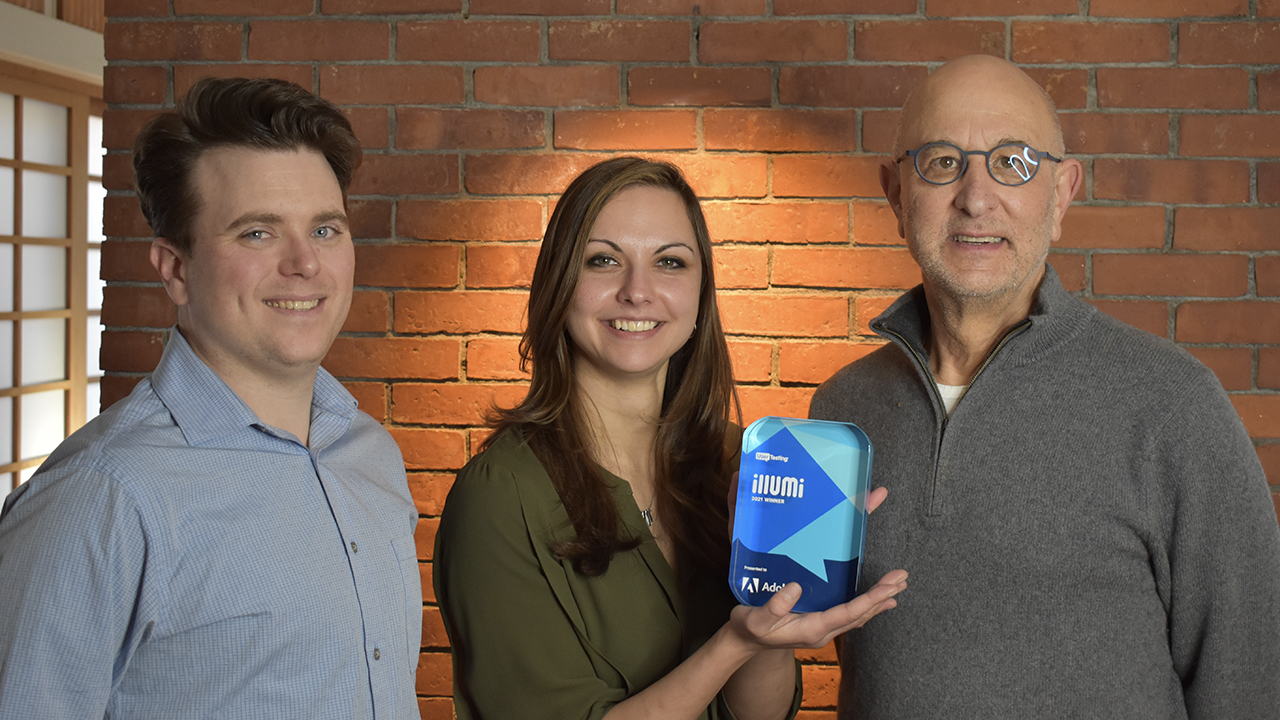
Adobe Research intern Shaun Wallace has a big goal: To provide everyone with a personalized reading format. With reading on both large and small screens now an everyday activity, improving the readability of digital text can “empower people to consume information in the way that works best for them,” says Wallace, a PhD candidate at Brown University.
Personalizing digital text is not as simple as it sounds, however. Each person reads differently, and what could help one person read digital text better may not help another. That’s the issue at the heart of Adobe’s Readability Initiative—a partnership of Adobe Research, Adobe engineering, product management, corporate social responsibility, and education teams, as well as external collaborators.
An initiative in the making
For the past 3 years, Wallace’s mentor Zoya Bylinskii, Research Scientist, has been working alongside Adobe’s Rick Treitman, Entrepreneur in Residence, other Adobe Research interns, and academic collaborators to further this readability research. Their efforts are now being bolstered by a new consortium of major companies and partners.
It started when Treitman, linked up with a nonprofit group called Readability Matters. “The group’s data showed that if you could customize reading formats for people, they would perform much better,” says Treitman, who quickly saw the connection between this research and Adobe’s work on the future of the PDF, including Liquid Mode (now released in Acrobat).
He reached out to Bylinskii, who had joined Adobe Research in 2018 and whose research interests overlapped with these efforts. They worked to form a new Readability Initiative at Adobe and recruited others to join in.

One summer of readability
The team knew that their work could be amplified by hiring an Adobe Research intern—a PhD candidate who could focus on readability in a summer project. “I had plenty of experience running perceptual and cognitive experiments from my PhD,” said Bylinskii. “So I thought I’d apply my expertise to look at readability—a topic I hadn’t heard about before but could explore with the help of an intern.”
In the summer of 2019, Bylinskii hired Wallace, who quickly became an active collaborator, closely involved with Adobe’s readability research efforts. Wallace’s work was possible because of Adobe Research’s internship program, which allows researchers and interns alike to delve into new research areas and start new collaborations in the hopes of making groundbreaking discoveries along the way. Adobe interns frequently continue their work with Adobe researchers beyond the internship, often culminating in a research deliverable like a paper to a top tier venue.
Wallace’s very first study considered 16 different fonts and their effects on font preference, reading speed, and comprehension. Some of the most impressive take-aways include that by personalizing font choice to the individual reader, reading speed gains of 4 to 5 extra pages per hour are possible–without a loss of reading comprehension.
However, the research also found that people don’t always pick the fonts that they would read the fastest if given a choice. This points the way to future work to investigate how to automatically recommend reading formats to the individual. Wallace presented his findings at VSS 2020, CHI 2020, and the longer version of the work was accepted for publication at TOCHI and presented at CHI 2022. Wallace also collaborated with Adobe’s Aleena Niklaus, Software Developer, on a study of reading rulers for dyslexia.
Pivoting in the pandemic
That internship in 2019 sparked a collaboration with Dr. Ben D. Sawyer, a postdoctoral fellow at MIT who went on to a faculty position at the University of Central Florida (UCF). Ambitious plans, discussed with Tong Sun, Director of the Document Intelligence Lab at Adobe Research, were to build out a new reading lab at UCF. The lab would bring students in and study their eye movements and brain patterns as they read differently formatted texts. A few months later, the Covid-19 pandemic hit.
“We pivoted to building a Virtual Readability Lab instead, which turned out to be a great thing,” says Treitman. “It’s an open framework for fielding online learning research.” Wallace took the lead in the online lab.
The virtual platform allows people to try out a 5-minute test to discover an effective font or spacing for them. (You can try it for yourself here.) You could think of it like a test an optometrist would give you, the team explains, except instead of a physical prescription, you walk away with a digital one.
The team’s dream is to build this information into a “digital token” for each person, which will act as a sort of digital pair of reading glasses to modify text for each individual, Treitman explains. That token could cross the boundaries of apps and devices, always ready to provide a better digital reading experience.

Interns help test new techniques
While the token is still a way off, Adobe Research interns and researchers continue to explore and test new techniques. “We want to find the perfect individualized reading format for each reader. It needs to be simple, fast, and available,” Treitman says. “Zoya and her interns are investigating multiple paths to creating that ‘diagnosis.’”
Bylinkskii recruited several research interns, who bring fresh perspectives. Qisheng Li, an Adobe Research intern in 2021, contributed to work at the intersection of readability and audio research. She worked with Bylinskii and Adobe Researchers Justin Salamon and Zeyu Jin to design an audio readability study. “It’s a novel method and will produce a new dataset to hopefully advance readability research in general,” she says.
The work has the potential to offer “an equal experience for everyone” when reading digitally, she adds. “I am always interested in understanding and designing for people with various abilities and backgrounds,” says Li, a University of Washington PhD candidate. She continues to be an active collaborator on this project.
Yile Zhang, an Adobe Research intern in 2021 and a UX master’s student at the University of Washington, was motivated to work on this project by a love of reading. “I read more on digital devices instead of books. However, the quality of digital documents can vary—sometimes I find myself struggling to read documents that are poorly designed,” Zhang reports.
She applied her UX expertise to the project on audio readability and also explored how a document’s overall layout can affect readability. She hopes that this kind of work will lead to “more and more people genuinely enjoying reading and increasing people’s working efficiency with digital documents.”
Dawn of a new field
When readability researchers from Adobe and their collaborators first launched this effort, they were hopeful that they could quickly dial into a few good reading formats to help various readers. But the work has turned out to be far more complex, engaging a wide range of experts who have just scratched the surface of readability.
There are many investigations to come at the intersection of typography and design, vision science and cognitive science, and education. Bylinskii explains, “We have the opportunity to develop predictive tools and recommendation systems. Machine learning will lend a helping hand as we discover ways to offer readers their personalized best reading formats.”
It’s a prospect that thoroughly inspires the research team. “The interdisciplinarity of this research topic, and its ability to make a difference in education and at the societal level, are the most meaningful aspects of this work,” says Bylinskii.